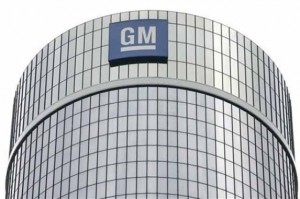General Motors’ ongoing turnaround effort got a significant endorsement today as it got its first debt upgrade to investment grade from Toronto-based ratings agency DBRS.
The big ratings agencies have yet to follow, though several have recently indicated their belief that GM is moving in the right direction and could follow the move by DBRS. An upgrade by ratings agencies like Moody’s and Standard & Poor’s, in particular, could significantly lower the automaker’s borrowing costs while also coaxing investors to drive up GM’s sagging stock price.
Today’s announcement was particularly significant in light of the ongoing problems General Motors has been having in Europe, where it is expected to lose in excess of $1.5 billion for all of 2012 – going into the red for the 14th consecutive year. That recently prompted analysts at Morgan Stanley to forcefully recommend GM get rid of its German-based Opel subsidiary.
“While DBRS recognizes that (GM) is currently facing significant headwinds in certain regions, notably Europe, this is expected to be largely offset by ongoing solid performance across other end markets,” according to a new report by DBRS.
The Canadian agency cited a number of reasons for the upgrade, including GM’s sharp reduction in debt and its increased earnings since its 2009 bankruptcy, as well as its increasing geographic diversity. Currently, about two-thirds of GM’s unit sales come from markets outside the United States, notably from China where it has continued to post strong gains despite that market’s overall downturn in automotive demand.
GM spokesman Jim Cain noted this is the first time any agency has granted the maker an investment grade rating since 2005 – when its stock price began to collapse, losses began to spiral and the first clear indications of an impending collapse became apparent.
Cain also noted that other ratings agencies have begun taking a more positive look at the maker. In August, Fitch Ratings bumped the maker from BB to BB+, a step short of investment grade. Meanwhile two other ratings agencies have been eyeing the maker positively. Moody’s – which also has GM at just below investment grade – has also said it sees a “Positive Outlook” for GM. S&P has issued a “Stable Outlook” advisory.
But some analysts remain skeptical. “One of the worst things in the auto industry is owning a cash-burning, resource-consuming business,” Adam Jonas, lead auto analyst for Morgan Stanley, warned earlier this month as he declared GM shares “overweight,” largely due to the continuing problems the maker has in Europe. “We believe the time has come for GM to find a new home for Opel,” Jonas explained.
As of late Friday, investors seemed buoyed by the DBRS rating upgrade, however, driving the price of GM shares up 59 cents, or 2.5%, to $24.12. That’s a significant jump from the $18.80 it slid to in mid-July – though still off by more than a quarter from the strike price set during the GM IPO in November 2010.
Other factors could be working in the company’s favor, however. Industry analysts suggest that the latest actions by the Federal Reserve to spur the economy might have an especially strong impact on both housing and automotive sales.
The U.S. auto industry has continued to outpace the overall economy, posting a nearly 20% gain in August. After several months lagging the pack, GM reported a good month of its own in the home market while also indicating it had nearly twice the gain of the industry overall in the key Chinese market in August.

